Room And Board Bedroom Furniture
The vast majority of lumber from demolished buildings is destroyed, contributing to the 15 million tons of wood that are landfilled or incinerated each year. But to Room & Board, this material is a precious commodity.

In 2018, Room & Board launched the Urban Wood Project, a premium line of furniture made entirely from salvaged wood. It was ambitious, given that, until recently, salvaged wood has largely been used in small projects by individuals. But over the past three years, the brand has figured out how to design products that highlight the unique qualities of the wood, creating a new revenue stream that is both profitable and eco-friendly. Room & Board now hopes that other furniture makers will follow its lead.

The Urban Wood Project includes a dozen bookcases, credenzas, and coffee tables, along with smaller items such as hooks and stools, priced between $25 and $2,999. Each item has a story. The majority of the wood in the collection is sourced from Brick+Board, which salvages material from old row houses in the Baltimore area.
The homes were built in the 1890s with lumber that came from old forests, whose trees first took root in the 1600s. Wood this old has far more complex patterns in its grain, and over time it develops a glossy patina. "We know the history of each piece of wood we have reclaimed," says Max Pollock, Brick+Board's founder and director. "I can tell you who lived in the house, who built the house, and which forest the wood came from. The materials have a history."

Pollock launched Brick+Board six years ago with the goal of creating green jobs. He realized that the majority of demolitions in the city were happening in neighborhoods that also had high unemployment. Pollock wanted to train and hire people from these communities to deconstruct the houses so the material in them could be salvaged. Since its launch, Brick+Board has hired more than 30 people, many of whom were formerly incarcerated; some have stayed with the company, while others have moved on to well-paying jobs in construction and carpentry. "We estimate that for every one job in demolition, deconstruction creates six to eight jobs," Pollock says.
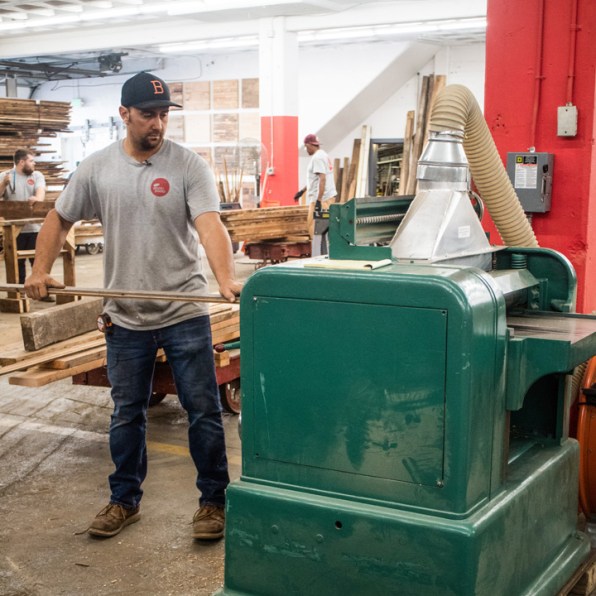
Most developers have no incentive to salvage the material in old houses because deconstructing a building is far more time- and labor-intensive than simply razing it to the ground and sending the rubble to a landfill. To scale up Brick+Board's impact, Pollock knew he had to work with other organizations equally committed to preserving the wood in these homes. The company partnered with the Baltimore field office of the USDA Forest Service, the federal agency tasked with protecting the nation's forests. The Forest Service is eager to support efforts to reclaim wood because it means fewer trees will be felled; it now coordinates with the city of Baltimore to identify properties destined for demolition and sends in crews from companies with expertise in deconstruction, including Brick+Board.
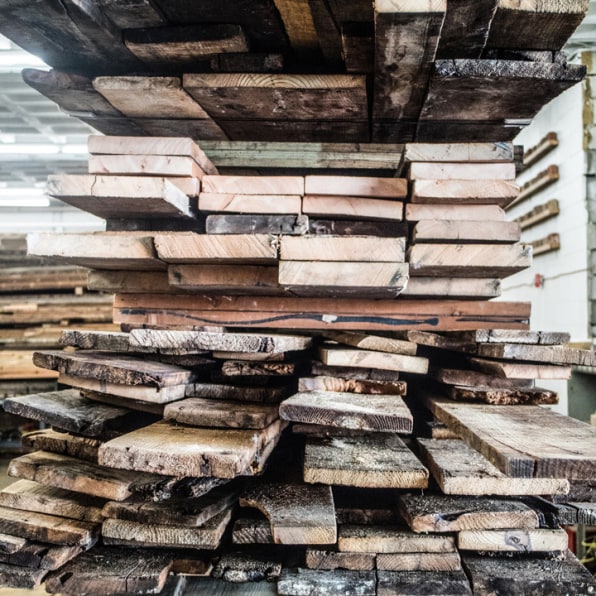
For the first few years after launching Brick+Board, Pollock saw his warehouse fill up with reclaimed wood. The materials cost between 20% and 30% more than traditional wood from a lumber yard because of all the labor involved. While there are many carpenters and architects who favor these materials because of their history and complexity, Brick+Board needed to find a company willing to buy a lot of wood to keep up with the volume.
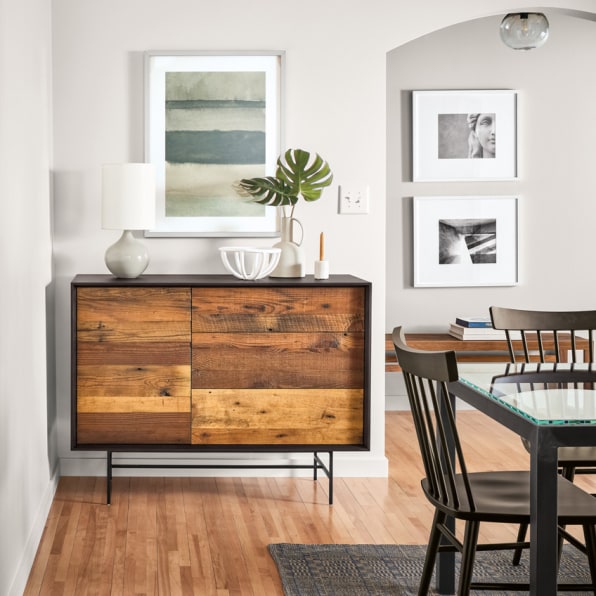
Room & Board was a natural fit. Since it was founded in 1980, the Minnesota-based furniture company has sourced heavily from American suppliers, unlike the majority of U.S. furniture brands, which manufacture in Asia. Today, 92% of Room & Board's production is done in American factories, most of whom source their materials locally. "Since we already have a robust local supply chain, we saw a way to incorporate this reclaimed wood into our product line quickly," says Gene Wilson, director of merchandising and vendor management at Room & Board.
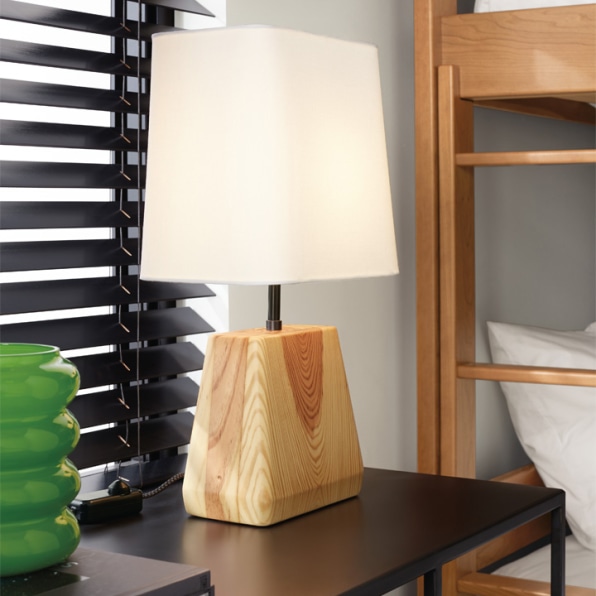
Since reclaimed wood is more expensive, Wilson knew that it would have to go into a more premium collection. Room & Board's designers created pieces that highlight the nuances of the wood: storage cabinets with an interesting grain, lamps whose bases are covered in rings and eyes, stools that take advantage of awkwardly-sized pieces.
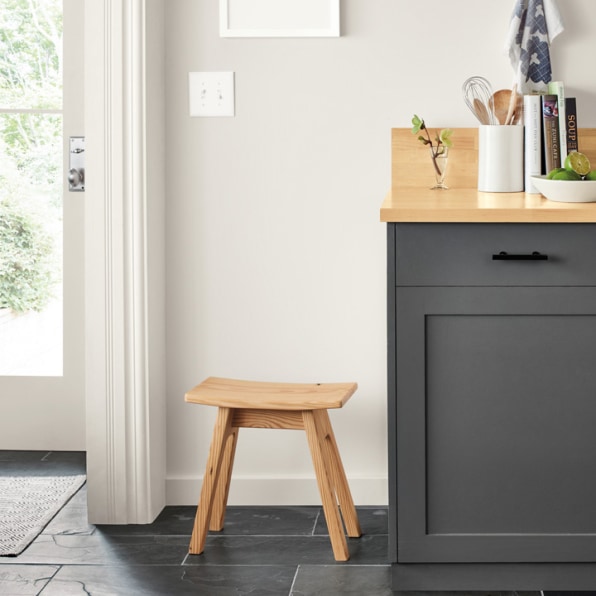
Wilson says it hasn't been hard to convince customers to buy these pieces, even though they're more expensive. When the brand does limited-edition pieces, they tend to sell out quickly. "People seem drawn to the beauty of the wood," he says. "And in a market full of mass-produced furniture, they like that each piece tells a story, both in terms of the materials and the people who made it."
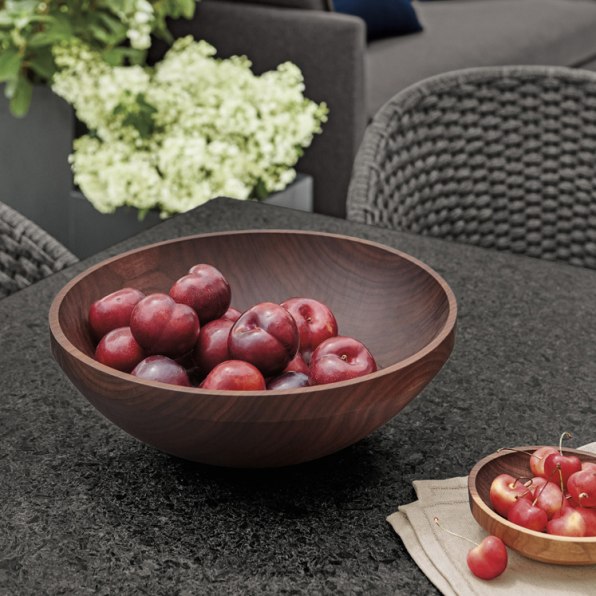
Now, Room & Board is actively looking for other suppliers of salvaged wood across the country. It has a collection of bowls and salad spoons made by Holland Bowl Mill, which sources the wood from Live Edge, a Detroit company that reclaims urban wood. It partnered with Urban Wood Rescue in Sacramento to create limited-edition coffee tables that are cut and polished to reveal the many rings within the wood. There are many other products in the pipeline.

Wilson hopes that Room & Board's experience with reclaimed wood inspires other furniture brands to follow suit. This will increase demand for the material, which will, in turn, spur more companies like Brick+Board to invest in deconstructing homes, rather than demolishing them. "We wanted to do this project to buy salvaged wood on the market," he says. "But we also wanted to show that it is possible to use reclaimed wood at scale, so that other furniture companies might do the same."
Room And Board Bedroom Furniture
Source: https://www.fastcompany.com/90601167/most-reclaimed-wood-is-used-in-one-off-projects-this-furniture-company-is-thinking-way-bigger



Posting Komentar